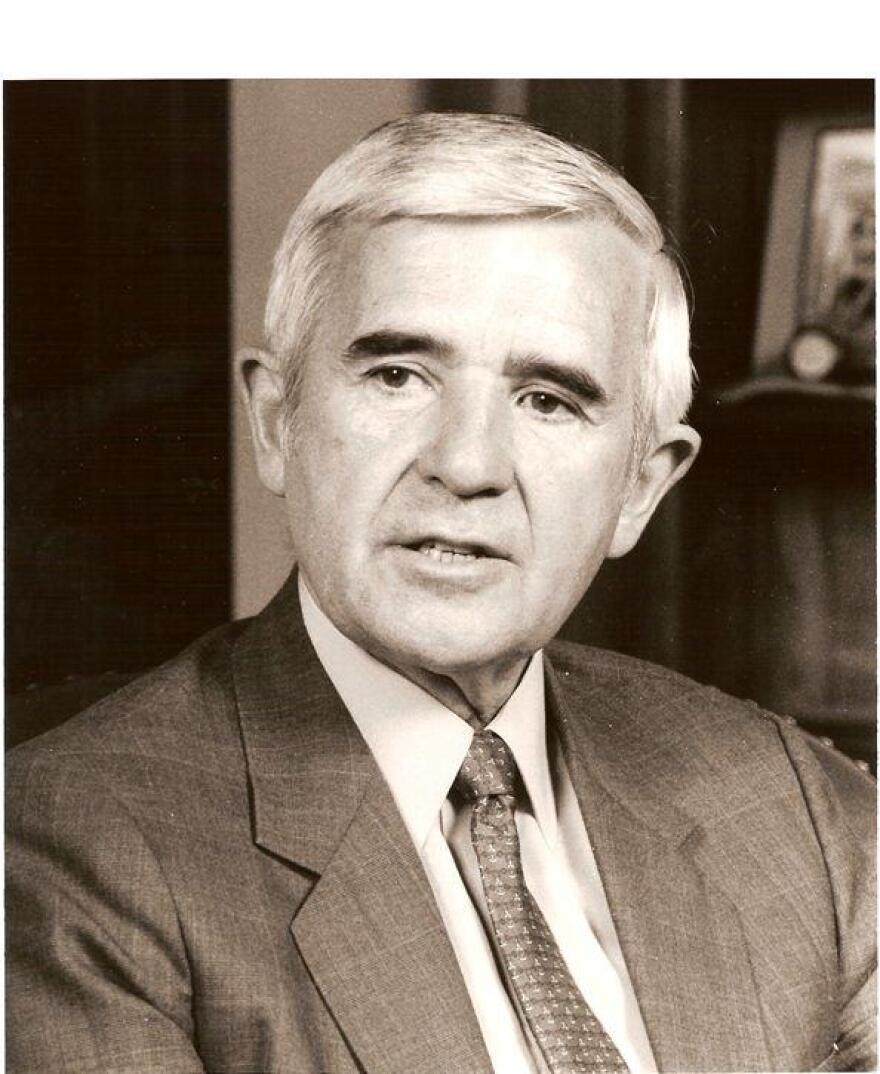Nevada Yesterdays is written by UNLV history professor, Michael Green, and is supported by Nevada Humanities.
He was known as Tall Paul. Physically, he wasn’t a giant. But he’s a towering figure in our history.
Paul Laxalt died on August 6, four days after turning ninety-four. He was both a governor and a U.S. senator. He did a lot to shape modern Nevada, and had a bigger impact on America and the world than many realize.
Paul Dominique Laxalt was born in 1922 in Carson City. Shame on you if you have never read Sweet Promised Land by Paul’s brother Robert. That beautiful book begins, “My father was a sheepherder, and his home was the hills.” Dominique Laxalt and his wife Therese were Basque. Dominique was one of many immigrants who came to the U.S. from the Pyrenees to work as sheepherders. They had six children, four boys and two girls. While Dominique was in the mountains, Therese ran the family as well as a boarding house where the state’s politicians often gathered. Young Paul spent a lot of time listening to them.
Paul Laxalt took an unusual route to law and politics for a Nevadan. He graduated from high school and went to Santa Clara University. After serving in World War II, he graduated from law school at the University of Denver. When Laxalt was going to law school, Pat McCarran was putting numerous Nevadans through law school in Washington, D.C., by employing them in his office. One of them was John Laxalt, Paul’s brother. Others included Alan Bible and Grant Sawyer. Paul Laxalt would encounter them in the future.
In 1946, he married Jackalyn Ross, the daughter of John Ross, a prominent lawyer and Republican party leader. In 1950, a year after graduating from law school, Laxalt won his first elective office: Ormsby County district attorney. He later said he didn’t enjoy being a prosecutor. The year he left that office, 1954, his father-in-law became Nevada’s second federal judge.
In 1962, Paul Laxalt sought his first statewide office: lieutenant governor. He was the first candidate to do much television advertising, and it helped him. He also learned, if he didn’t know already, how tangled the web of Nevada politics is.
[[field:story]]
That year, the Republican candidate for governor was Rex Bell, the outgoing lieutenant governor, a former cowboy movie star, husband of It Girl Clara Bow, and proprietor of the Walking Box Ranch in Searchlight. Bell died and Nevada Republicans asked Laxalt to move up. He declined. First, he wasn’t sure he was ready for that. Second, he would have faced Grant Sawyer, an incumbent Democrat with strong party support.
Laxalt’s opponent in the lieutenant governor’s race would be Berkeley Bunker, who hadn’t sought statewide office in 16 years. And the last time he had, the Democratic party had divided over him because he had run for office against a onetime political ally. He hadn’t been completely forgiven.
The story gets better. In 1964, Democratic Senator Howard Cannon would be running for a second term. His administrative assistant, Jack Conlon, was known as Shady Harry. The shady part will be clear shortly. Conlon feared—incorrectly—that Sawyer might challenge Cannon. He figured, if Sawyer had a Republican lieutenant governor, he wouldn’t give up the governor’s mansion. So, behind the scenes, Conlon did what he could to help elect Laxalt.
He succeeded. Laxalt won in a year where Democrats easily won every other statewide race—every one of them. And as we’ll see next time, Laxalt had just started an incredible political career.








